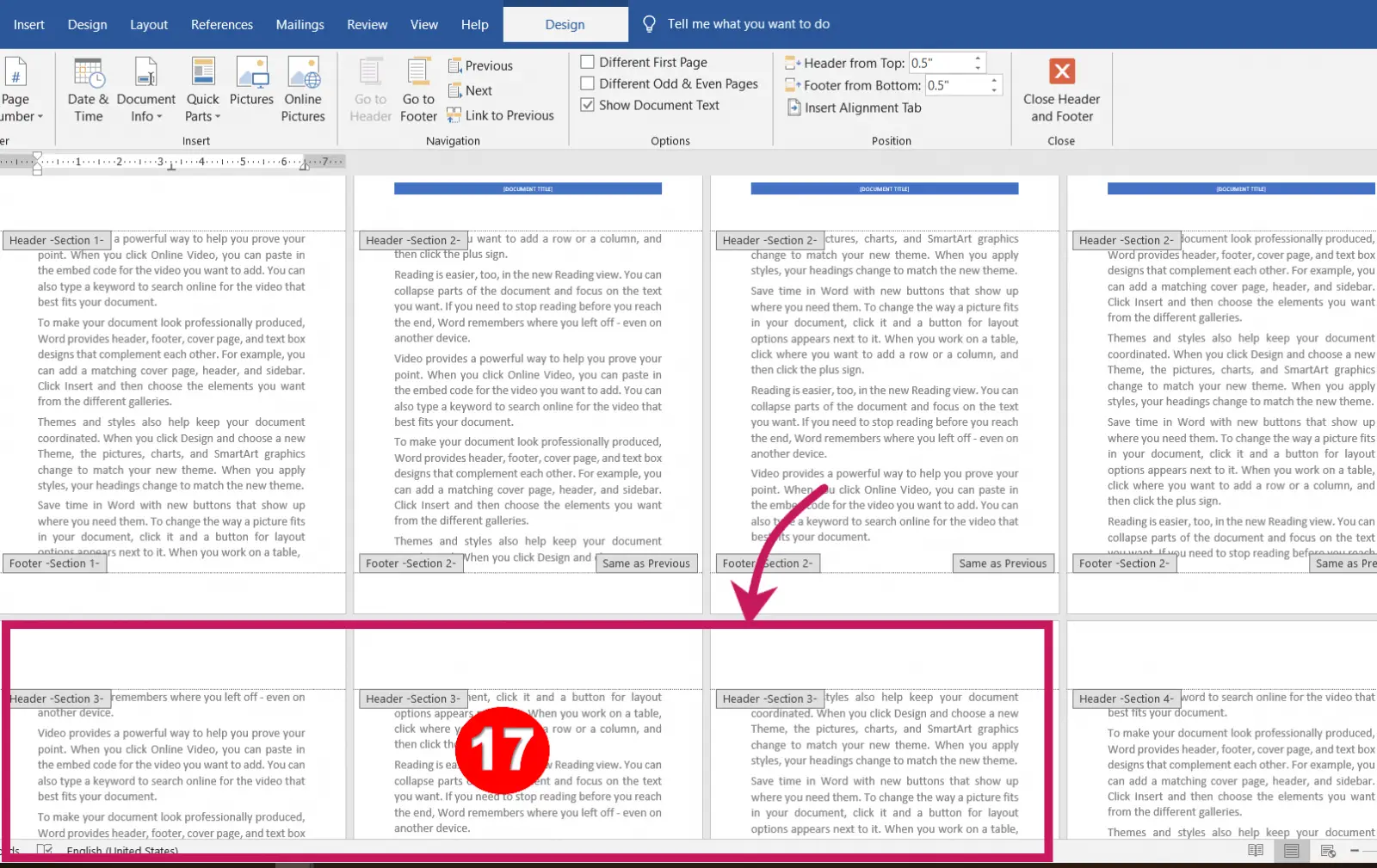

This is due to the fact that each section can have its own header attached. As I edit the document, my headers disappear or change.

I have a bunch of continuous section breaks in my document, each seems to have its own heading.

(Use the paragraph symbol on the Home tab to show them, if you have difficulty). Once you are satisfied that the headers (or footers) are fixed, you can delete each of the new page returns. Once you fix the headers, you can test them by typing in a letter or number in one header and scrolling through the pages to make sure it shows up on all the pages. Do this for each section that you have given its own page (Ugh!). Click it to link the current header to the previous header. The design tab (of the ribbon) should have the focus and you should see a navigation pane with a “link to previous” option. Double click on the header to go into the edit header/footer mode. Once each section is on its own page, we can edit the header (or footer) for that section. There are a couple of ways to do this, but my preferred approach is to tell Word that the first page of each section will have a different header. After each section break we will need to insert a new page (Ctrl-Enter for shortcut). You usually don’t want the running header to appear on the first page of a chapter as you already have the heading there anyway.
#Header different first page word manual#
And manual page breaks can cause all kinds of other issues.We need to link each header from each section back to the original header (or footer). According to this philosophy, if you've set things up correctly (styles), you shouldn't need to add manual page breaks. Word is a "word processor", and it's main concern is dynamically laying out the lines and pageīreaks as the user edits. The reason I go into all this is because there is no event or other way to capture when Word generates a page break, or when you're at a certain point on a page. Just define a style that includes these settings (plus anything else you need in the way of formatting) and apply it to the Range (t_Style). I suspect the "Keep together" option and/or Widows/Orphans option may be what you need. You'll find these settings in the Paragraphĭialog box, "Line and Page Breaks" tab (launcher, bottom-right of the Paragraph group in the Home tab of the Ribbon). Word has a built-in Widows/Orphans functionality, as well as a way to keep entire paragraphs together, and one paragraph (a heading or caption, for example) together with the following paragraph. To toggle between the first page and subsequent page headers or footers, use the Show Next and Show Previous buttons on the Header and Footer toolbar, or simply scroll to the first or a. Now you will have a separate set of headers and footers for the first page appropriately labeled. The best thing for you to do in order to achieve no "hanging threads" is to work with Select the check box for Different First Page. This is the same for VBA, or any other programming language that's capable of COM automation :-) What you're struggling with is Word's object model. NET developer to make extending the UI and some parts of Word and Excel easier and more "intuitive". Actually, it's not "VSTO" you're struggling with.


 0 kommentar(er)
0 kommentar(er)
